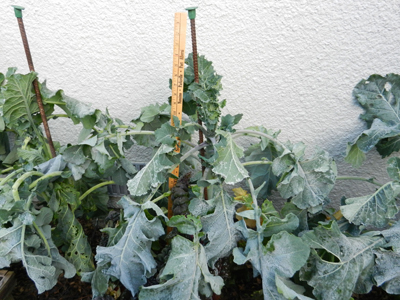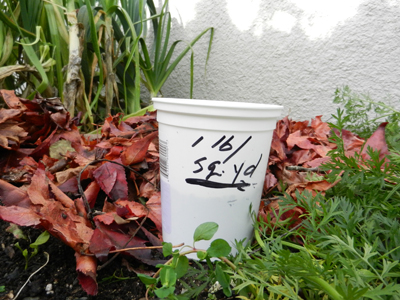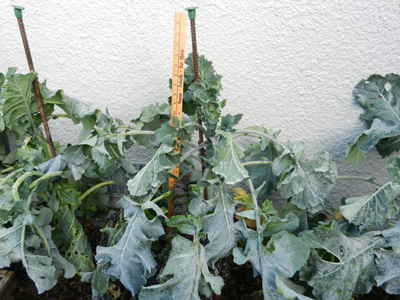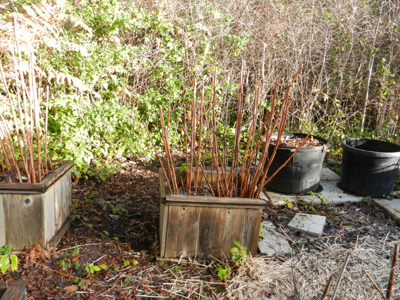November In The Food Garden
Getting the veggie garden ready for winter entails just a few simple tasks. The first really hard frost of the season is upon us; we need to prepare now for the winter that lurks nearby.
First of all, the soil needs to be protected from incessant rain, which leeches out nutrients and compacts the ground. All bare soil benefits from a 2-4” mulch of fluffy leaves, and if you have seaweed available, add it now as well.
What not to put on your garden now? Compost! Winter rains wash the nutrients away, and the microorganisms are sleeping anyway, so save your compost in the bin, and cover it with a loose blanket of plastic to keep it relatively dry and warm(ish). Be watchful though, last year I found suspicious little rat-sized tunnels in my protected compost.
When to lime? Yesterday! The recommended amount is 1 pound of Dolomite lime per square yard; simply measure one pound, and mark it on a container.
If you got your Purple Sprouting Broccoli and Brussels Sprouts planted in time, then you will have tall, slightly top-heavy plants now. They will need staking against the winter winds, but otherwise are quite hardy; just some leaves stuffed between the plants to protect the soil will suffice.
Seeded in early May outside, my Lacinato Kale is tall and gorgeous now, so I loosely tied it to a stake as well.
Root crops such as carrots and beets will also want some leaf mulch to cover their shoulders, which may have pushed themselves above the soil surface.
Chard and spinach, having more delicate leaves, will also appreciate a bit of cover or protection in very cold spells. If they do freeze hard, not to worry; just let them thaw outside, and they’ll be fine. Don’t bring them in when still hard though, or they’ll look very sad when thawed in a limp pile.
In the berry patch, you should have already cut back the raspberries; this year’s fruiting stems of summer-bearing varieties (eg Tulameen, Latham) should be cut right down, and everbearing (eg Fall Gold, Heritage) ones can be cut down only half way, to allow sprouts to form from them, giving a summer crop as well, hence the name everbearing – summer and again in fall.
Strawberries also need cutting back, remove all old leaves then cover the crown with leaf mulch for protection. Being acidic, shredded oak leaves are great for strawberries.
Early next spring when your food crops are producing bountifully, you’ll be happy that you took these few steps to keep them at their best.





